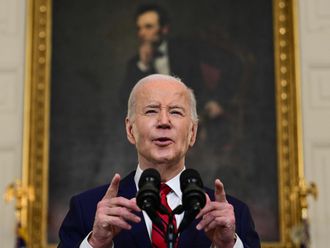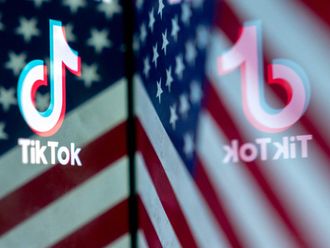Ferguson: The fatal shooting of Michael Brown has strengthened calls to have police officers wear cameras at all times — an idea that has given a big boost to firms that produce these cameras for police use.
The stock for Taser, the stun-gun maker that also makes a line of wearable cameras for police officers, has jumped as much as 30 per cent since the events in Ferguson, Missouri first gained national media attention. At VieVu, a Seattle-based firm, requests from police departments for free trials of the company’s wearable camera have increased 70 per cent in the past few days, chief executive Steve Lovell said.
When an amateur photographer captured the beating of motorist Rodney King in Los Angeles in 1991, the tape was a media sensation — not only because of what it showed, but also because it demonstrated the power of having a camcorder in hand. Now smartphone or GoPro footage from bystanders is the norm in news reports.
But the idea of police wearing these pager-sized body cameras has been slower to gain traction. That’s despite support from a wide range of groups, including the American Civil Liberties Union and the International Association of Chiefs of Police (IACP), which say camera programs can significantly improve police department operations.
Costs often keep departments from deploying these cameras, which are priced at $600 (Dh2,203) to $900 each, Lovell said. But growing evidence from police department trials worldwide indicates that camera footage helps police resolve complaints.
In cases where video evidence was submitted from in-car cameras, 93 per cent of complaints against officers were dismissed, while 5 per cent were sustained, according to a report from the IACP in 2004. Individual cities also have reported success; The Wall Street Journal reported that complaints against police in Rialto, California fell 88 per cent in the first year that officers used body cameras.
Business for companies such as Taser and VieVu was booming even before events came to a head in Ferguson. VieVu has about 44,000 units in circulation with 4,000 customers worldwide, including the police departments in Oakland, California., Atlanta, Phoenix, Dallas and Houston. Taser, in the past quarter alone, booked nearly $11.4 million in contracts — nearly four times the sales of the previous year.
“We believe the concept of using wearable cameras to provide a foundation of transparency has hit a tipping point,” Rick Smith, Taser’s chief executive, said in a statement Tuesday. “The intense emotions that arise from uncertainty and diametrically opposed conjecture about what did or did not happen in life-and-death encounters can tear communities apart. We believe wearable technology, like body-worn cameras, is the future for communities to relate to those entrusted to protect them.”
Taser has a pager-sized camera that can be worn on the chest or a belt, as well as other models where cameras can be attached to sunglasses or even put in the grip of a stun gun.
Once an officer takes footage of a crime scene or incident, the video is often attached to a police report and submitted as evidence, said VieVue’s Lovell, whose company produces two body cameras designed by its founder, Steve Ward, a former member of the Seattle Police Department, SWAT team member and Taser employee.
Both companies provide software for the cameras, to ensure that the sensitive video doesn’t fall into the wrong hands and that it can’t be edited or otherwise altered. Taser’s Evidence.com and VieVu’s VeriPatrol software upload videos from officers’ cameras to cloud storage, and track when videos are viewed. The software allows administrators to limit who can access a video and when.
Individual police departments set their own policies for how video from police cameras gets managed — who can view it, when it can be released to the media or the public, and how long footage is retained. But with growing pressure on police departments to be transparent about their actions, Lovell is confident that more officers will soon be wearing body cameras.
“I think any police department could be one shot away from having an incident like Ferguson” and landing in the national spotlight, he said. “Agencies have to keep current with technology trends that are out there.”












